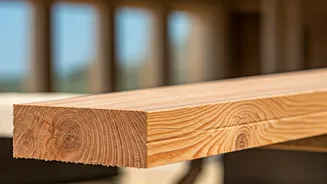Timber Rivals Steel
The scientific community has unveiled a new wood composite named Superwood, designed to outperform traditional timber and rival the strength of steel.
This innovative material showcases extraordinary properties, proving to be 20 times more robust than standard wood. It also demonstrates exceptional resistance to damage, with a dent resistance that's ten times superior. Moreover, Superwood presents significant environmental advantages, resulting in a reduction of up to 90% in carbon emissions during its production compared to other materials. This development marks a significant step towards sustainable and durable construction practices, as Superwood's unique characteristics make it suitable for a wide range of applications. The material promises to be a game-changer in the architectural, design and engineering industries.
How Superwood Is Made
The precise manufacturing methods behind Superwood have been a subject of interest since its discovery. Although the exact details are not fully documented in the provided context, it is clear that the process leads to a vastly superior material. Research into the production methodology reveals the critical steps in creating a product with such remarkable properties. The process likely involves advanced techniques that enhance the natural structure of the wood at a molecular level. These techniques may entail chemical treatments or modifications to the wood's internal structure. This process is believed to reinforce the wood's natural fibers, which results in a stronger, more durable product that can withstand significant stress and wear. The precise techniques utilized in the creation of Superwood are continuously evolving, as scientists work towards improvements and find cost-effective production methods.
Global Impact, Ambitions
Superwood's emergence holds the potential to reshape numerous sectors globally. Its application could dramatically transform the construction industry, with lighter, stronger materials. The significant reduction in carbon emissions associated with Superwood production offers environmental advantages. In addition to construction, Superwood could revolutionize the design and manufacturing of items. Scientists and industry leaders are working to commercialize Superwood and discover its full potential. Research is underway to optimize production methods and explore diverse applications. The widespread adoption of Superwood could foster advancements in environmental sustainability and innovative design solutions, leaving a lasting impact on how we live, build, and interact with the environment.










